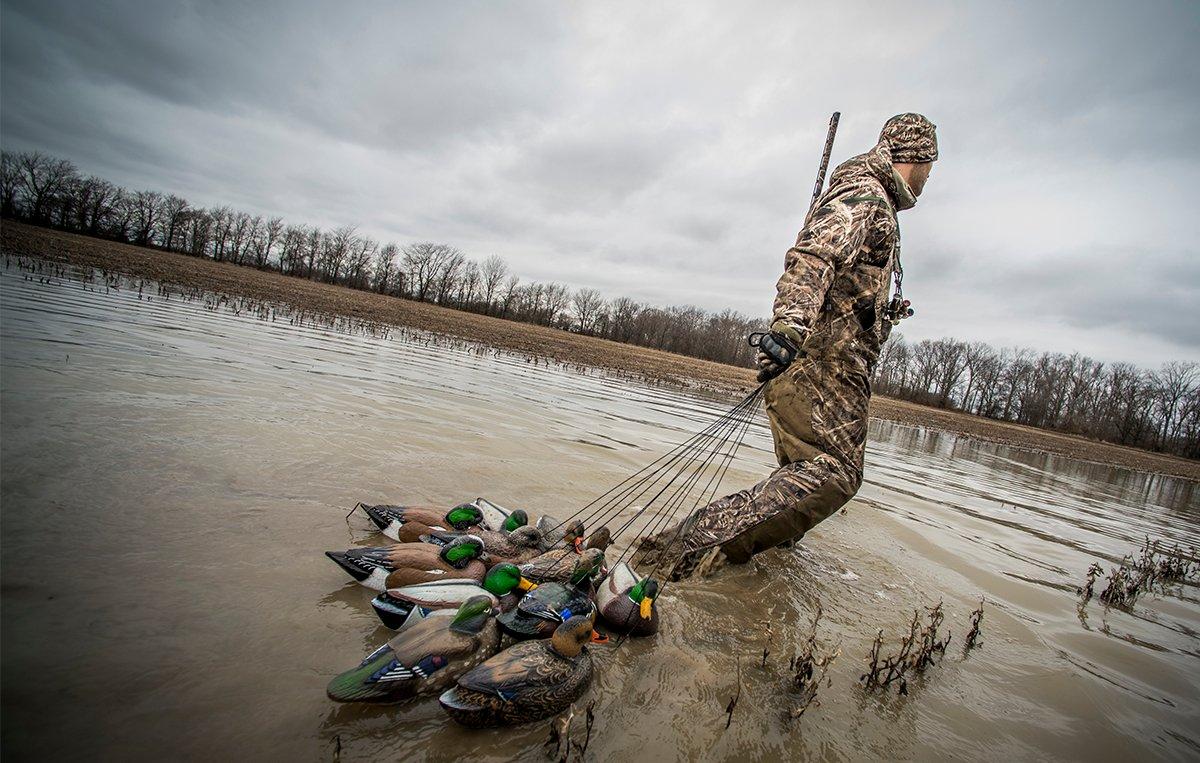Preparation Makes On-Foot Outings Easier, More Successful
Sometimes, the duck boat must stay on the trailer. Secluded sloughs or hidden timber holes beckon, and the only way to reach these unpressured hotspots is on foot.
I've enjoyed great walk-in hunts in the cattail marshes of Wisconsin, the parklands of Manitoba and across the pothole-rich eastern portion of the Dakotas. And although these outings seem fairly simple and straightforward, they hold many unique challenges and considerations. Here are some tips I've learned ‚ often the tough way ‚ for facilitating great walk-in waterfowl hunts.
Click here for more Realtree waterfowl hunting content. And check us out on Facebook.

File this under the duh category. Obviously, hunts in which you must walk farther than a few dozen yards call for light gear.
Decoys typically present the heaviest load. Use lighter or smaller fakes so you can comfortably carry enough blocks. Burlap-wrapped super-magnums will kill you. Instead, consider water-keeled decoys, suck-duck-type blocks or even blow-up models. They won't ride waves and wind as well as heavier decoys, but they won't leave you gasping for air as you walk, either.
Also, avoid toting excess ammo. You can probably kill a limit with a box of shells or less, right? Take just enough for the hunt, and leave the ammo crate full of steel at home.
Photo © Bill Konway

This goes hand in hand with item No. 1. Scouting will reveal what types of ducks you'll likely encounter and how the hunt might play out. Plan your decoy spread accordingly. Take enough fakes to get the job done, but try to pare down numbers ‚ and the amount of weight and bulk you'll carry‚ when possible. For woodies and mallards at small potholes, you can usually get by with a half-dozen decoys. On bigger water, you might want to double or triple that number. In multi-species situations ‚ think North Dakota pothole ‚ you'll want to mix in several species. And if you might shoot some divers, it's wise to tote at least a few diving duck blocks to form a visible stool or tail to attract cansbluebills and the like.
Sometimes, a spinning-wing decoy will help. Other days, it won't. It's your choice, but you probably won't need it on small, secluded waters.
Photo © Bill Konway

Little equipment tweaks pay huge dividends when you have to trudge a half-mile through prairie grass. Wear light, breathable waders, not heavy rubber or neoprene types. Fit your gun with a comfortable sling. Consider using a plastic sled to carry decoys, blinds, stakes, dog huts and other gear you might need. Wear light, breathable clothing during the walk, and don't put on heavy gear until you've reached your destination and cooled down.
If you carry decoys in a bag, make sure the straps are sufficiently tight and designed so the bag rests against your back and doesn't slap you in the butt or legs every time you take a step. That gets old after about 10 yards.
Photo © Bill Konway

Use satellite maps or boots-on-the-ground scouting missions to locate the easiest, safest route to your hunting area. This might not seem like a big deal, but you do not want to stumble into an unseen maze of cattails at zero-dark-thirty. Stay on dry ground as long as possible, and avoid thick cover and fences when you can. I'd rather walk 200 yards out of my way on dry pasture than fight willows or prairie grass for more than a few yards.
Also, mentally rehearse your trip before heading out. It's amazing how different the landscape looks when it's dark or you stumble into cover, even if you use a headlamp.
Photo © Banded

This also falls into the duh bin. Relatively long walks in marshy environments or areas with uneven footing can be tough on your body, so prepare yourself months in advance. Any type of cardio will help, but walking or running will really strengthen your legs and hips. Oh, and don't forget about your shoulders, trapezius muscles and lower back, either. Pulling a sled, hoisting gear over a fence and packing in decoys requires lots of strength and endurance. A good weightlifting program will help you prepare. Also, consider taking a fairly heavy pack that simulates a decoy bag on your walking workouts. Yeah, off-season training can be tough, but I'd rather suffer through that than have to quit halfway into a trek toward a mallard-laden slough.
Photo © Bill Konway






